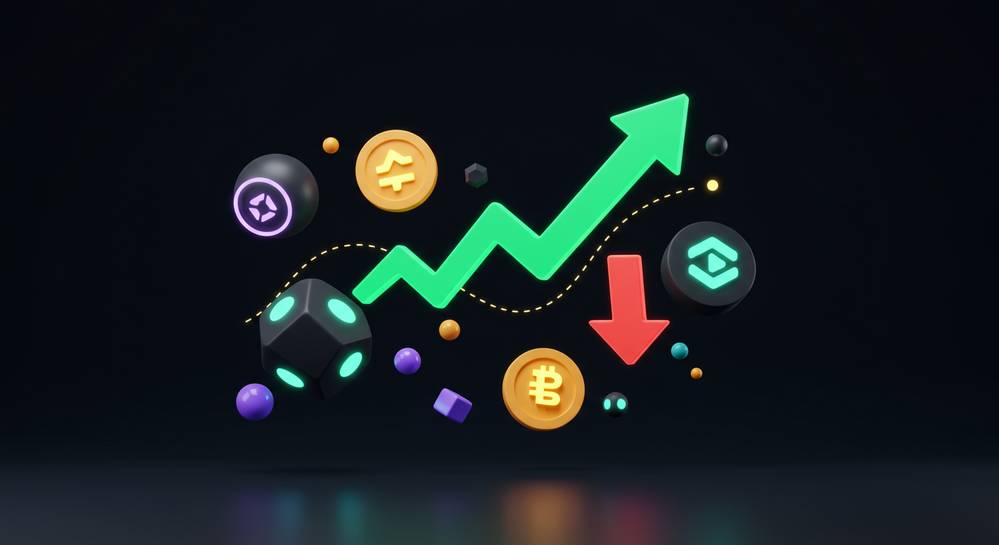The world of Decentralized Finance moves at lightning speed, with new developments emerging daily. Keeping up can feel overwhelming, yet staying informed is crucial for anyone involved in the space. This comprehensive overview provides today’s DeFi news roundup, breaking down the most significant events into clear, actionable insights to help you understand the market’s current landscape and future direction.
Key market movers and token performance analysis

The DeFi market is in constant motion, driven by a mix of broad cryptocurrency trends and sector-specific developments. Key performance indicators often revolve around Total Value Locked (TVL), trading volumes on decentralized exchanges (DEXs), and the price action of major governance tokens. This week, we are observing a consolidation phase across major assets like Ethereum, which serves as the foundational layer for much of the DeFi ecosystem. While volatility remains a given, the stability of major stablecoins such as USDC and USDT continues to provide a reliable medium of exchange, underpinning liquidity across lending protocols and DEXs. Pay attention to the performance of leading protocol tokens like UNI (Uniswap) and AAVE (Aave), as their movements often signal shifts in investor confidence within their respective niches.
Understanding these key metrics is crucial. A rising TVL suggests growing trust and capital inflow into the ecosystem, while surging DEX volumes can indicate heightened trading activity and speculative interest.
Today’s DeFi news roundup highlights
This week’s DeFi market analysis reveals a cautiously optimistic sentiment. While overall Total Value Locked (TVL) saw a modest 2% increase to $115 billion, trading volumes on decentralized exchanges surged nearly 15%. This signals active capital rotation rather than broad new market entry. Today’s DeFi news roundup is dominated by the performance of Layer 2 protocols and liquid restaking tokens, which are outperforming foundational assets during their consolidation phase. This trend shows investors are actively seeking higher yields within specific niches.
- Liquid restaking protocols continue to attract significant capital, with their collective TVL growing by 8% this week alone, according to DeFiLlama data.
- Uniswap (UNI) has shown notable resilience, posting a 5% gain as DEX activity picks up. Its performance remains a key indicator for trader confidence in core decentralized trading infrastructure. You can learn more about what is Uniswap and its ecosystem.
Protocol upgrades and feature launches

Innovation is the lifeblood of decentralized finance, with protocols constantly evolving to offer better security, efficiency, and user experience. Keeping track of these changes is essential for identifying emerging opportunities and potential risks. Today’s DeFi news roundup shows a clear trend towards enhancing scalability and interoperability across different blockchain ecosystems. These updates are not just incremental; they represent significant steps toward making DeFi more accessible and powerful for a mainstream audience.
Some of the most significant recent developments include:
- Layer 2 Native Deployments: Major protocols are moving beyond simple integration and are now launching native features directly on Layer 2 solutions like Base and Arbitrum. This shift significantly reduces transaction fees and improves performance for complex operations.
- Cross-Chain Interoperability: The focus on seamless communication between blockchains is intensifying. Upgrades leveraging technologies like undefined are enabling unified liquidity pools and governance across multiple chains.
- Real-World Asset (RWA) Frameworks: Protocols are introducing standardized frameworks for tokenizing real-world assets. This development is crucial for bridging traditional finance with DeFi, potentially unlocking trillions in new liquidity.
Security alerts and recent exploits

Where there is value, there are attempts to exploit it. The DeFi space is no stranger to security breaches, making it imperative for users to stay informed about the latest threats. Today’s DeFi news roundup consistently features reports on vulnerabilities, reminding us that vigilance is non-negotiable. Recent incidents highlight a shift towards more sophisticated attacks, moving beyond simple smart contract bugs to complex multi-protocol exploits. The most common threats currently include:
- Flash Loan Exploits: Attackers manipulate asset prices on decentralized exchanges to drain funds from lending protocols.
- Wallet Drainer Scams: Malicious dApps trick users into signing transactions that grant attackers unlimited access to their funds.
- Bridge Vulnerabilities: Exploits targeting cross-chain bridges remain a significant source of large-scale fund losses.
Reputable projects are doubling down on security by undergoing multiple independent code reviews. For users, the key is to interact only with audited protocols and practice good wallet hygiene. Understanding undefined is a critical first step in protecting your assets.
The evolving regulatory landscape
The interaction between DeFi and traditional regulatory frameworks is a critical narrative shaping the industry’s future. Governments worldwide are moving from a hands-off approach to developing more defined guidelines for digital assets. As seen in today’s DeFi news roundup, recent discussions center on anti-money laundering (AML) and know-your-customer (KYC) requirements for platforms with clear links to traditional finance. This push for oversight aims to enhance investor protection and curb illicit activities, marking a significant shift in policy.
This dual trend of increasing regulatory clarity and rising institutional adoption is a strong indicator of the sector’s maturation, paving the way for mainstream acceptance while also introducing new compliance challenges for protocols to navigate.
Simultaneously, institutional interest in DeFi continues to grow. Major financial firms are not only investing in crypto assets but are also experimenting with blockchain technology for their own operations. This influx of institutional capital brings greater liquidity and stability to the market. It validates the technology while forcing protocols to meet higher standards of security and transparency to attract these larger players.
The DeFi ecosystem remains a dynamic and complex frontier, filled with both immense opportunity and significant risk. Staying current on market performance, technological innovation, security threats, and regulatory shifts is not just beneficial—it is essential for navigating the space successfully. For continuous updates and expert analysis, stay connected with Financial Insight Daily.
